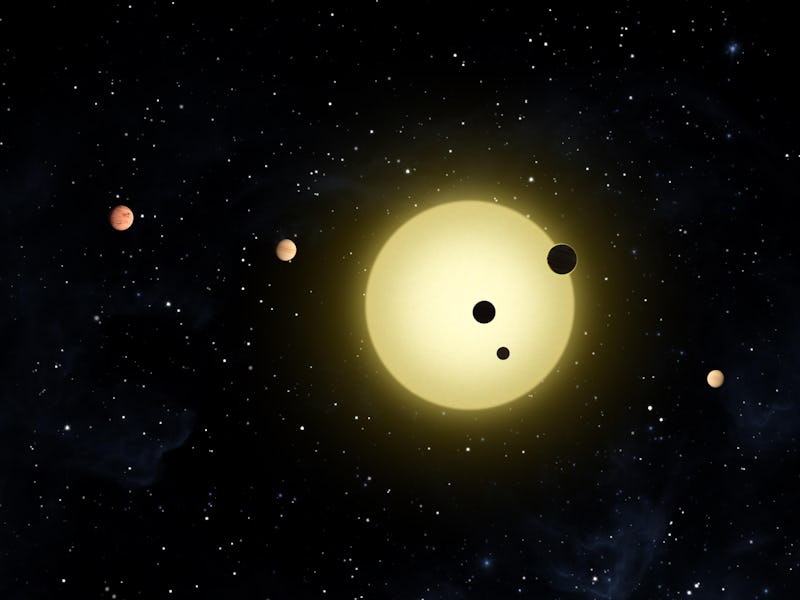This new method could fast-track the discovery of alien life
We're getting closer to detecting habitable exoplanets.

Astronomers are on the hunt for alien life outside of our Solar System. More than 4,000 exoplanets have been discovered in recent years, but we don’t yet know if any of them have all the key ingredients needed to be habitable. But thanks to a new method, astronomers can now identify one of the most important characteristics of habitability — potentially putting the search for alien life on to a fast-track to success.
The method is detailed in a new study published this week in the journal journal Nature Astronomy. The technique detects oxygen on exoplanets using NASA’s James Webb Space Telescope. A strong indication of life on an exoplanet is the presence of oxygen in its atmosphere.
Detecting oxygen on other worlds
On Earth, there would be no life if it weren’t for oxygen, and the same may be true of other planets. But oxygen is difficult to detect in the atmosphere of an exoplanet, since it’s difficult to obtain a sample and bring it back to Earth.
Instead of sampling the planet’s atmosphere, the new method aims to detect the signal created by oxygen molecules when they collide with each other. As oxygen molecules collide in a planet’s atmosphere, they block out parts of the infrared light spectrum, essentially creating an imprint that can be detected by our telescopes.
The team behind the new technique hope to use the James Webb Telescope, scheduled to launch in March, 2021, to observe the atmosphere of exoplanets and look for this unique signal.
Artist rendering of the James Webb space telescope.
To develop the new technique, the team calculated exactly how much light would be blocked off by the oxygen molecules to create a pattern in the spectrum of infrared light observed by the telescope.
“Before our work, oxygen at similar levels as on Earth was thought to be undetectable with Webb,” Thomas Fauchez, a researcher at NASA’s Goddard Space Flight Center and lead author of the study, said in a statement. “This oxygen signal is known since the early 1980s from Earth’s atmospheric studies but has never been studied for exoplanet research.”
Oxygen: How clear a signal is it?
But the presence of oxygen may not necessarily mean that life exists on an exoplanet. In fact, it may be an indication that the planet lost another one of its key ingredients for habitability — water.
If an exoplanet orbits too close to its host star, the heat from its sun might evaporate the planet’s water, leading to an abundant presence of oxygen in its atmosphere.
“Oxygen is one of the most exciting molecules to detect because of its link with life, but we don’t know if life is the only cause of oxygen in an atmosphere,” Edward Schwieterman, an astrobiologist at University of California, Riverside and co-author of the study, said in the statement. “This technique will allow us to find oxygen in planets both living and dead.”
So while the new method may not offer a sure shot at finding alien life, it does offer a better understanding of how much oxygen is needed to support habitability — and that could help us finally settle once and for all whether we are alone in the cosmos.